Today, on Art of the Cut, we’re speaking with five of the six editors who worked on the HBO series Winning Time. Those editors are (in alphabetical order) Oscar-nominee Hank Corwin, ACE, Jessica Hernandez, ACE, Max Koepke, Felicia Livingston, and Jeremy Weinstein. Juliana Rodzinski also edited the show, but couldn’t join the call. Short on time? Read our 6-minute best of recap.
Art of the Cut The Editors of Winning Time
Hank Corwin, ACE is an Academy Award nominee, ACE Eddie Winner, and BAFTA-winning editor. He’s edited or co-edited six films that have been Academy Best Picture nominees, including JFK, The Tree of Life, Moneyball, The Big Short, Vice, and Don’t Look Up. Most recently, I interviewed him for his Oscar nomination for Best Editing for Don’t Look Up, directed by Adam McKay, who was also a director on Winning Time.
Jessica Hernandez, ACE has also been a guest on Art of the Cut before for her work on A Black Lady Sketch Show for which she won an Emmy and was nominated for an ACE Eddie. She’s also an editor on the TV series Shining Girls, numerous films and TV series, and has won a Peabody Award.
Max Koepke was an additional editor on Mile 22, which we featured on Art of the Cut. He also cut the feature Payback and has worked on numerous videos for bands such as U2, Pearl Jam, and Bon Jovi.
Felicia Livingston is a previous Art of the Cut guest for her work on the TV series All American. Other TV series include The Red Line and The Flash.
Jeremy Weinstein has been an assistant editor on numerous projects including VICE and steps up to the editor’s chair for Winning Time. He also edited the feature film Binti.
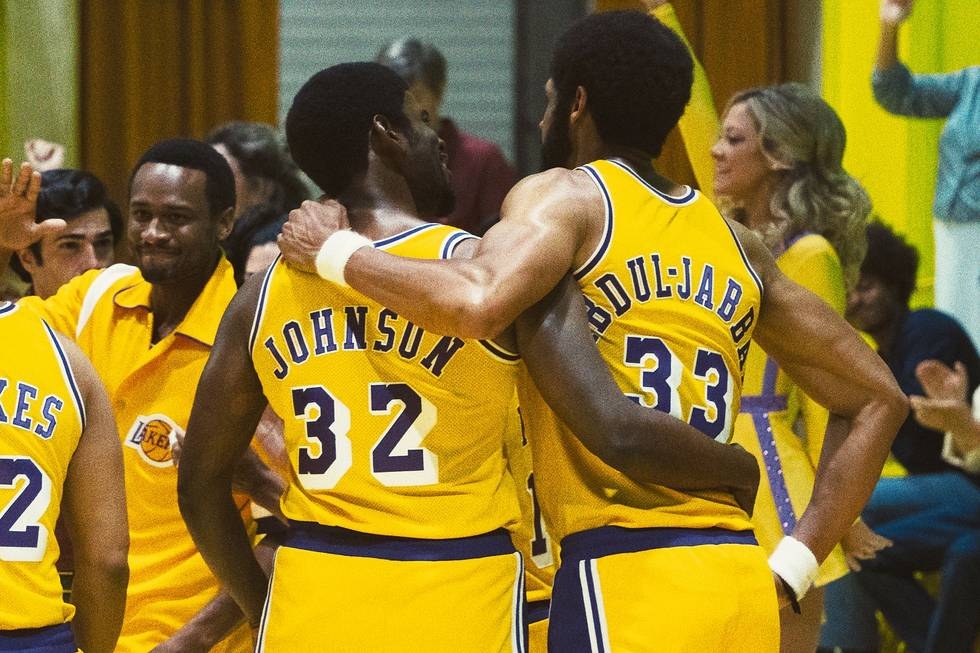
HULLFISH: I wanted to get into the style of the show. I just love this from the opening montage at the very beginning; if we could start with Hank just about the importance of setting a style at the beginning, so the audience knows what they're getting into.
CORWIN: There was a time and a place for this show, and I hate using the word authentic. It's become so overused, but maybe having an emotional authenticity, because you're never going to match the times completely, even when they shot with the Ikegami camera. It looks a little soft because I was working in the eighties, where we had Ikegami cameras, and they were so sharp and so crisp.
HULLFISH: [Laughs] Or your memory of it is a little soft because I shot with an Ikegami camera as a news cameraman back in the early 80s, and they did seem sharp back then, but nothing about standard definition is sharp today!
CORWIN: You're right. You're right. God, I guess that sort of dates us, Steve. [Laughs].
WEINSTEIN: I heard Todd Banhazl talking about this recently, and they said those cameras are so old that they bought like ten of them, and only three of them worked. So one looked a certain way. Another was the workhorse. The other one only did this really dream buggy-like stuff.
CORWIN: Jeremy, they were state of the art! [Laughs] With the cameras and the sound, we really were trying to set this emotional tableau using pictures, almost like painting in pastels. I wanted this to have a quality of a somewhat memory. Something in the past that ultimately becomes part of a film vernacular and you just get caught up in it and it becomes the style of the picture. It becomes the norm for the picture, but in the beginning, even with some of the crazy picture-in-picture we did, it was always meant to be an impressionistic painting of the times.
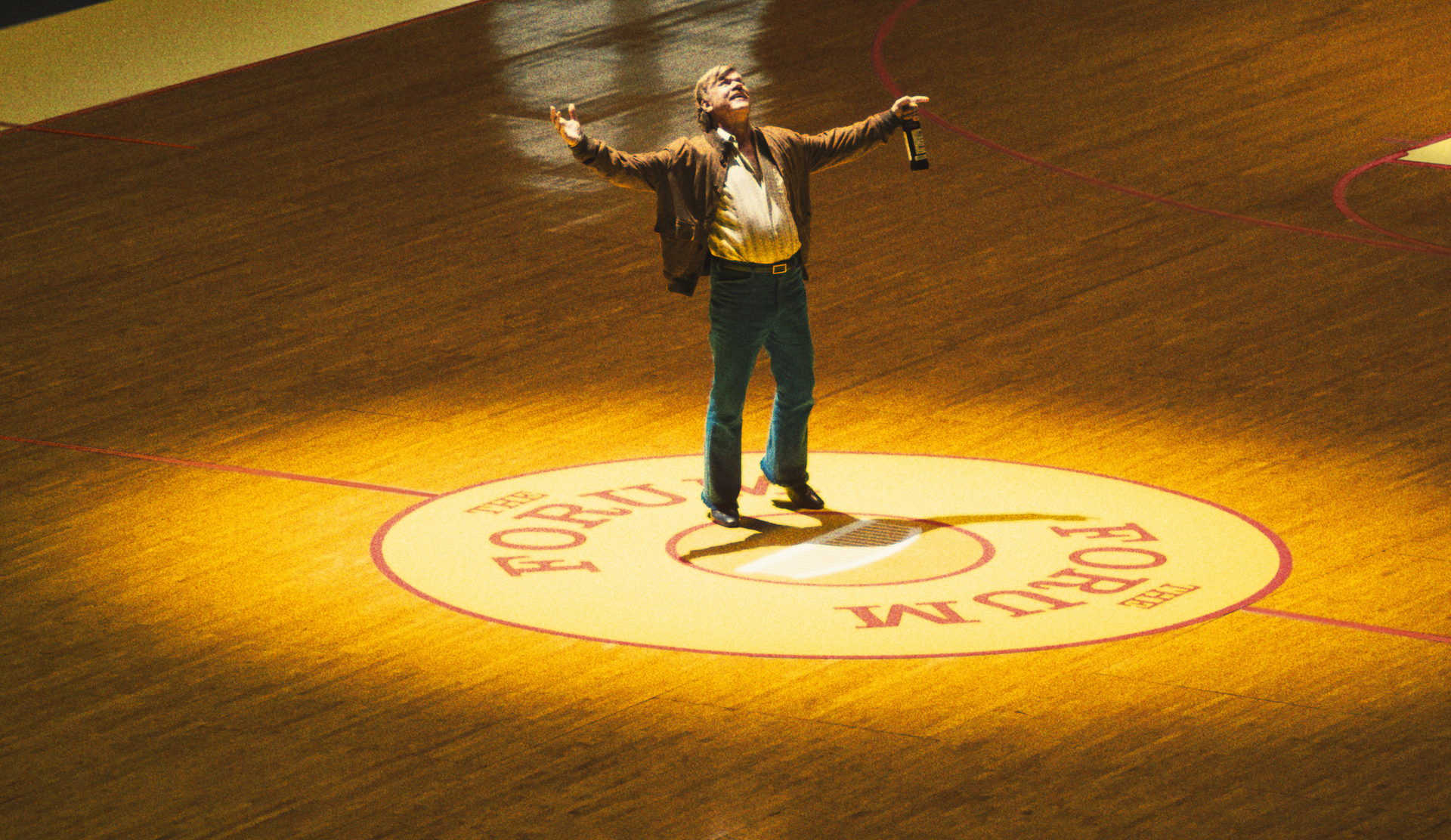
HULLFISH: You guys used Super 8 film cameras for some stuff, right? Was that for real?
CORWIN: Yeah, it is.
HERNANDEZ: For the most part. We'd make it up if we needed it.
WEINSTEIN: Justin Cameron, I think, was the one who shot our Super 8 footage. He would think about it thematically. Sometimes he'd be able to capture things that wouldn't normally be captured with the 35mm or the Ikegami. It seems like each format gave us its own things that we could use in different ways. That was really special. It wasn't just framing. Each thing could mean different things if we wanted it to, or it obviously has its own feel, but you're trying to make the whole scene feel a certain way. Yeah, it gave it something special.
HERNANDEZ: Justin was able to be more nimble than the rest of them. He could get into places that nobody else could and get the shots. It was really helpful in that way too.
KOEPKE: Another thing about all the different formats and the style being so freewheeling all the time is that we were able to use any kind of format for any part of any scene if we wanted.
If that shot told us something emotionally true, we'd use it. It didn't matter if it was the Super 8, the Ikegami, the 35mm, or if it was out of focus or in focus or zooming. If it emotionally made you feel right or was what we needed, we had the liberty to use it. There were really no rules dictating what camera we had to use or in what way to use it, which is really liberating for an editor.
CORWIN: This goes way back to when I cut Natural Born Killers. The initial temptation was to use certain cameras for certain moods, emotions, or actions. I found really quickly that it didn't work. It became very prosaic. It became very prescriptive. With this show, we decided just to cut emotionally.
HULLFISH: Episode two starts with the Jerry West montage starting with him as a child, and I remember it switching back and forth between formats. Can somebody talk about trying to mix those formats and doing that montage?
WEINSTEIN: Yeah, I cut episode two, and that beginning goes to what Max was saying. It's how you cut emotionally. We did mix in some Ikegami when we got outside with Jerry playing, especially when we were close on his hands and with the snow falling.
If it feels right, you cut to it, was the feeling I used. We were introducing this new character. We want you to feel like you're there, so I had to figure out the best way to make that happen.
HULLFISH: Hank, did you cut the open, or was that done by a company?
CORWIN: Oh yeah, I cut that.
HULLFISH: Tell me about building that because it really sets you up for the show and the style of the show.
CORWIN: I wanted to set it up. I love stock footage because it's so messy and real and very human. I never really worked in TV, but HBO has an army of attorneys, so every time I had a shot, they would say, “No, we see a face!” and of course, we see a face. People have faces. [Laughs] They had to get indemnification from a person that was like 300 yards away. It was the proverbial bitch trying to cut this thing because every time you build these structures, they become a house of cards. My gosh, I was working on this thing for months, and I'd be so happy, and then somebody would come and kick my sand castle. We finally got it. I think it's all legal. It's playing, so I guess it's legal. [Laughs]
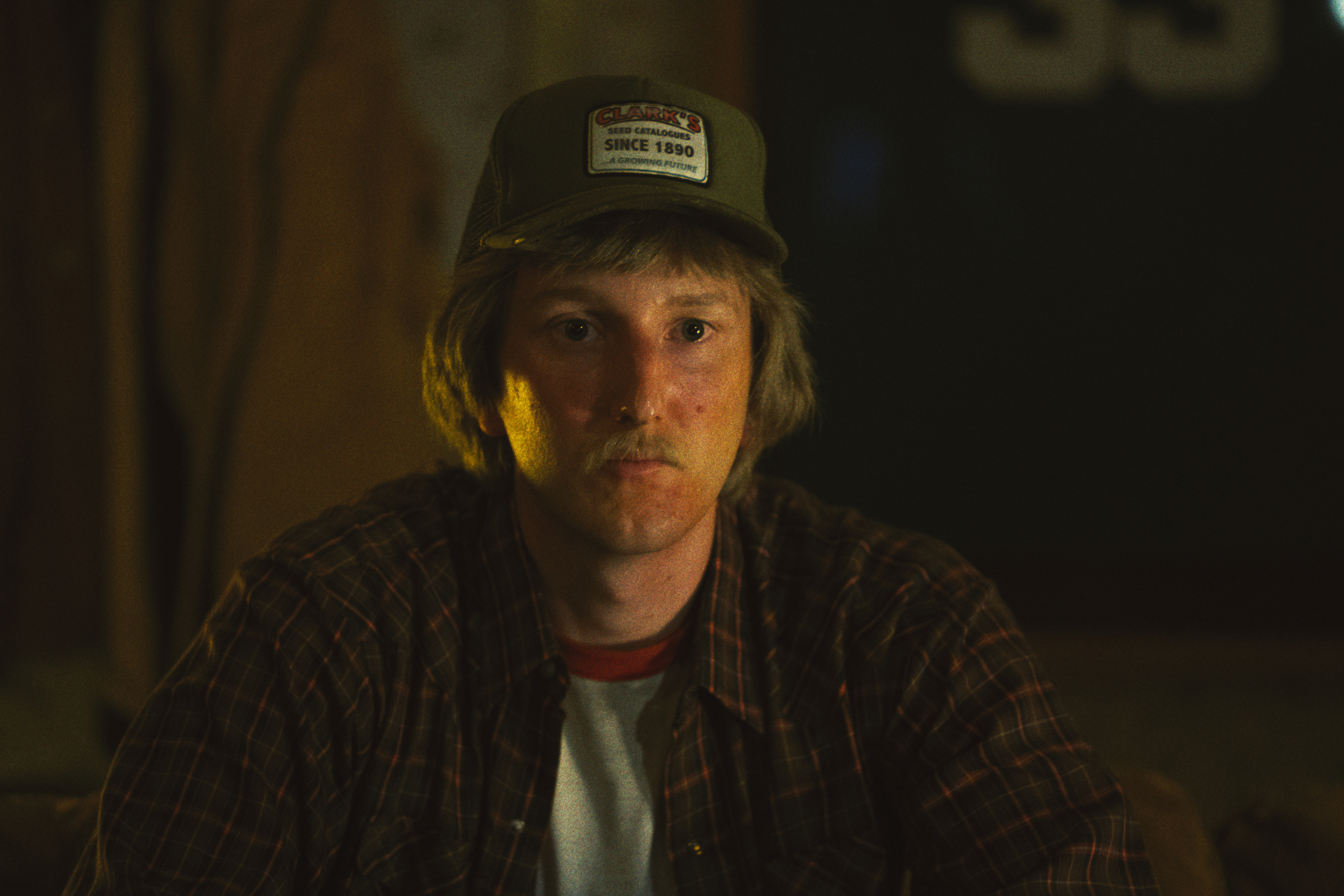
HULLFISH: This show does break the fourth wall, and it always interests me when that happens. Can someone talk about the fourth-wall-breaking that happens in the episodes that you cut? How do you get in and out of that? Does it take something special as an editor to cut something where the actor is breaking the fourth wall?
LIVINGSTON: For me, that's actually the easiest part of our job. I would always bridge that if I needed to go in another emotional direction. They're just saying their lines and then they turn towards the camera. We have it in every take, every camera angle. It’s the easiest part of my job.
HULLFISH: It's so interesting that you mentioned tone. Can you talk about the tonal shifts in the show?
LIVINGSTON: I actually didn't have that much in episode five, but in episode nine, I have it in the very beginning. The scene where Frank breaks the fourth wall and Jerry Buss is really angry. He’s yelling and screaming. I had to be really delicate in how to handle that. For me, when I had a character that broke the fourth wall, I had to really look at it and see where that tone goes because normally. If the actor is breaking the fourth wall, it’s usually to give their internal dialogue. That's what it is. That is what they're thinking, but the scene has to keep going on. I would switch tonally between that and the rest of the scene.
HULLFISH: Jess, how do you manage tone in an episode or in dealing with someone breaking the fourth wall?
HERNANDEZ: The only thing I would add with the fourth wall thing is that we definitely had to become judicious. It became an overused device very quickly. So we'd have to be very careful about how often we'd use it. In episode three, which was mine, we opened on this big argument, and we break it, but it's so fluid at the point. He’s in mid-argument, and then he is arguing at the audience and then back. That was a pretty simple and smooth transition but generally and tonally speaking, I think it’s really a gut feeling. I always say it's music. It tells me the rhythm. It tells me what it wants to be at any moment.
It’s like how I knew when to use the Ikegami camera. It might give me a little more emotion than the other ones. It would tell the truth. It was just uglier, but you'd get such a different performance out of people whenever I'd use it. Some of my favorite pieces of my episode are the ones from the Ikegami. Like the scene with Pat Riley begging for his job to Chick. I use it very specifically there to get his vulnerability of begging for this job. It’s like what Hank said about prescriptive. It was just from the gut and where it felt rhythmically correct to do it. Hank allowed us to have such freedom in the edit. He inspired so much of what we did. I can't thank him enough for that.
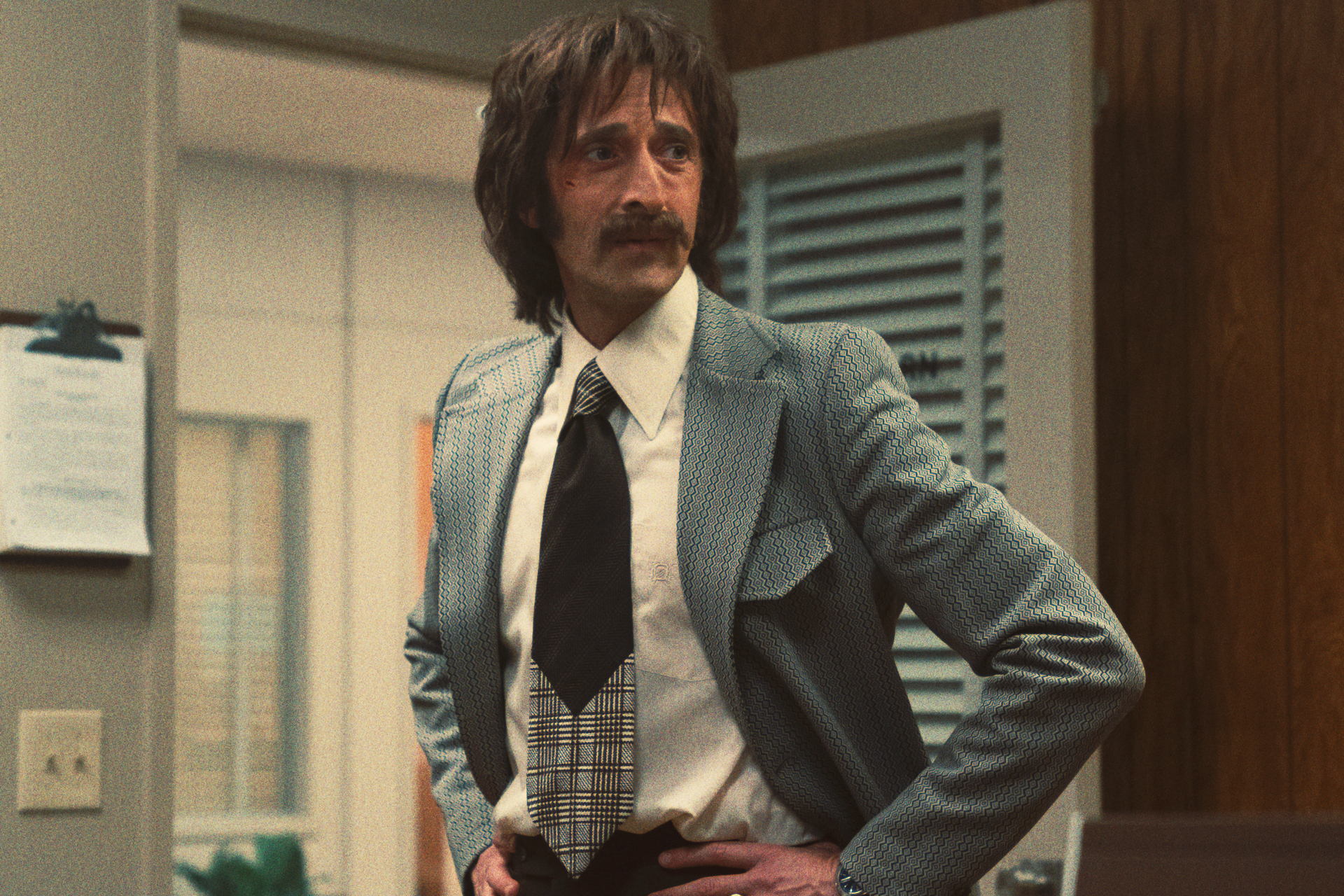
HULLFISH: One of the things that I noticed in the first episode, Hank, that I've seen in your other work, like Don't Look Up, is time fracturing. Sometimes a person is talking, yet you see them drinking a scotch or smoking a cigarette as they are talking. Talk to me about using that and being brave enough to do it.
CORWIN: Ultimately, it's not a matter of courage. It's very empirical. It's a way of cutting that allows you to incorporate all kinds of emotion and behavior into seemingly one take. You're saying something and you're making an editorial statement. If you use a piece before the slate where someone's looking off into space, or he is laughing, you're getting to know a piece of behavior that ordinarily you wouldn't see, and occasionally there's a real clash. It’s a dialectic struggle in the edit, but you learn more about the characters.
HULLFISH: Felicia, talk to me about picking up that style. I'm assuming that before you cut any scenes, you watch the pilot.
LIVINGSTON: Yeah. I watched the pilot, and I was blown away by it. Then I got hired, and all of a sudden, I'm in the editing band, and I’m like, “How the hell do I do this?” [Laughs]
HULLFISH: I would have the same thought. [Laughs]
LIVINGSTON: What's great is, I have the pilot in front of me, and I have the timeline, so every time I would cut something, I would go back and look at the pilot. For me, it took a while to get into that mindset, to be able to cut into that time fracturing. So my initial route was to cut it linear.
It took a while to get used to the time fracturing, but once I did, it was like I couldn't think any other way. Now I'm a little bit spoiled because that's the only way I can think. I’m on this other project now, and I am doing it, but then I realize, “Oh, what am I doing? I can’t do that on this!” [Laughs]
CORWIN: You're going to work with some directors, and they're gonna say, “What are you doing!?” [Laughs]
LIVINGSTON: Yes! I actually had that conversation last week. [Laughs]
HULLFISH: I love that! Max, tell me about picking up that style and feeling comfortable or the freedom of that style.
KOEPKE: I’ve had the privilege of knowing Hank for a long time. The best way to put the style that we're trying to emulate here is just following your imagination. I really try to experience the footage the best I can in the most personal way that I can and then follow my imagination to try and get to know the characters personally and let it take me where it wants to take me.
Like Felicia was saying, you start to see what works with certain characters and with certain film stocks and certain music, and you develop this muse for yourself. It's this little alter ego that you have, and you just hold onto it for as long as you can. Sometimes editing can be frustrating, but when it's not, it's very liberating and very fun. It just flows.
HULLFISH: Yeah, let’s explore that for a second. I just watched the episode where Earvin is playing basketball with Cookie's new boyfriend, and Earvin hands this guy his ass. You cut to stock footage of two dogs humping.
WEINSTEIN: Yeah, that was episode two. One of the things that Hank really pushed us to do is be bold and don't be afraid to make mistakes. The worst that's gonna happen is they say no, or you get called silly for doing something. Don't be afraid to expose yourself to rejection because if you swing for the fences and you don't hit it, then you're okay, but sometimes some really great things come from those big swings.
The idea behind the dog thing was that, besides it being funny, you put a button on the end of it. Earlier in the scene, you have Cookie’s boyfriend insulting Magic and calling him a dog. So to show Magic beating him so bad and then cutting to that stock footage, it was a little bit in your face, but I thought it gave a little joke to it.
Something Hank talks about is when you are cutting, think about your character's inner life. I think that's where a lot of that layering came from. You can really discover some great moments by just messing around.
The first time I met Hank was at Lost Planet. I was interviewing with him to be his assistant on Vice, and he showed me something he did for a commercial spot for Hummer. He pulled out the 35-millimeter film, and instead of cutting it one way, he cut it the long way, like across many frames with the razor. He took it, and he spliced it back together, so it was like this jagged edge, and they loved it. They played it that way. The reason I think about that a lot is it speaks to Hank's ethic of editing. There's always a way that you can do it. It's continually exploring, and this whole process for us was really filling creatively. It’s like a big experiment that resulted in this show that we're all so proud of. It was this wonderful year of my life.
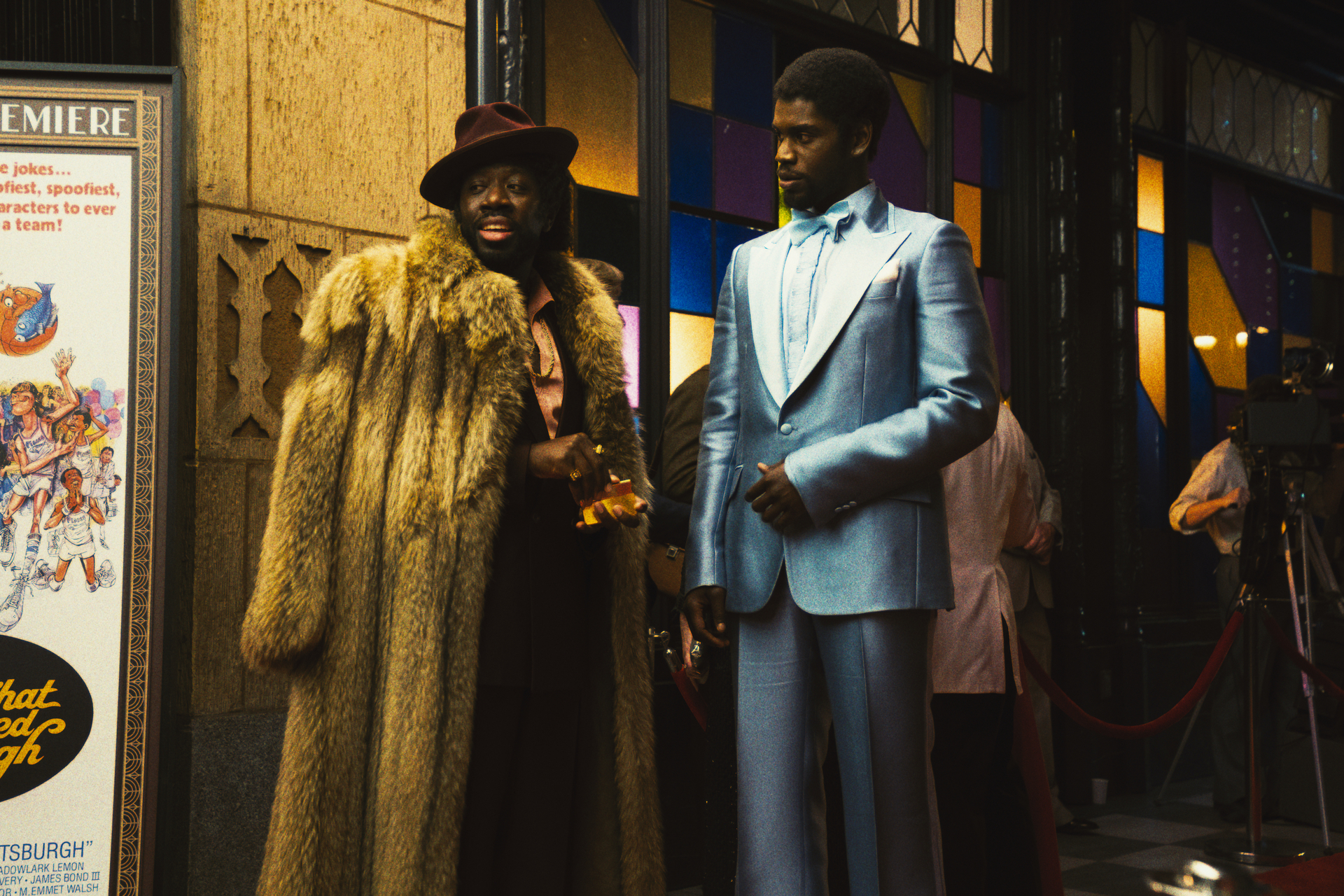
HULLFISH: Did you know that you had that stock footage of the dogs or was it something you knew you were going to have to search for?
WEINSTEIN: My assistant, Juliana, who is also an excellent editor and actually helped me cut that episode, found that footage. I was like, “Hey Juliana, can you find me some stock of dogs going at it?” I added some dog barking earlier and wanted the stock footage to be in a park so that it’s not just out of nowhere. Sometimes in other scenes, I had other animals in it, and they didn't make it into the final cut, so it was a special way of working.
HULLFISH: That's awesome. It reminds me of my new favorite quote, “Failure is not the opposite of success. It's a step towards success.” Love that idea.
Jess, talk to me about some experimentation that you were able to do in one of your episodes.
HERNANDEZ: There was tons of it everywhere, but I would say there was some basketball at the end of episode seven where I freeze-framed the entire last moment of the game, like every single person, and I was allowed to try that. It was a little bit of an homage to Don't Look Up’s last scene. I did a lot of split screens in episode three between Magic having sex with these three women and his family on the phone, so that was a lot of fun.
I think we were able to experiment everywhere. I saw somebody mention it as a Warholian style, and I think there is a real free association to it. There was one scene where Jerry Buss is doing his hair as a toupee. In that scene, he says, “I’m a math guy” and I asked my awesome assistant Anna to try and find stock footage of a kid who's doing math wrong. We found a kid adding 4 plus 6 is 11. So when he says that, we cut to that kid doing math wrong, and it gives you an internal bit about who Jerry Buss really is. I don't know why I free-associated that, but sometimes it worked really well, and sometimes it was just silly.
You wouldn't believe how much amazing stuff hit the ground. There are cuts of these shows that you will never see that are awesome. One of the most insane things Hank told me was to take four of these scenes and make them one scene. So that was a fun attempt! Some of it really worked. We were able to really integrate scenes into each other in ways that were seamless in ways you might not even have noticed.
HULLFISH: Hank, I want to talk about the coin toss from the first episode. I loved it! It’s 43 seconds. It should only take 1 second, maybe 1.5 seconds, but this one takes 43 seconds. Can you tell me about those 43 seconds?
CORWIN: I’ll start and end by saying that I didn't cut that scene. Juliana, our assistant, cut that. Jeremy, did you work on it as well?
WEINSTEIN: Yeah, I think one of the special things about the pilot was that Juliana started it, then I worked on it, and then I think you're being a little modest because I'm pretty sure you finished it. So it was super collaborative, right?
CORWIN: Yeah, the intention was to get people thinking a certain way, and she went for it. She really felt that she had a grasp on how to take it, as did Jeremy, so I said, “Go for it." I’m older than these guys, so what I try not to do is make value judgments on their cuts. I might not have put in the dog humping at the end of that scene, but that's a value judgment. The scene itself and the thinking behind it was as valid as anything I could come up with, so it wasn't in my purview to change it.
HULLFISH: Something else that you do fairly often, and that's in the style of the show, is cutting off sound. For example, in the scene where they are trying to find a coin for the coin toss but can't because it's a bunch of rich people and none of them have change. In that scene, Claire bursts out laughing, but the audio gets cut off. What’s the value of cutting somebody's voice off like that?
CORWIN: That’s something I've been playing with more on the later films like Vice and on Don’t Look Up. The purest form of editorial is light and the absence of light or sound and the absence of sound. If you have someone laughing, and then you cut it off, it's very abrupt. It's jarring and you become acutely cognizant of the fact that someone was laughing as opposed to having it just be smeared in there. You're making a point. You’ve got to be very judicious as to how you do these things.
What I'm discovering with this kind of editing is it has to be the exception to the rule as opposed to the rule itself. It becomes the language and the convention. One thing I found with this kind of cutting is it's very subjective, and it may be purposeful to me, but to someone else, it may seem absurd or gratuitous. You're always going to take heat for this kind of editing. This is the converse of the transparent art that editing is supposed to be. It's editing to make a statement.
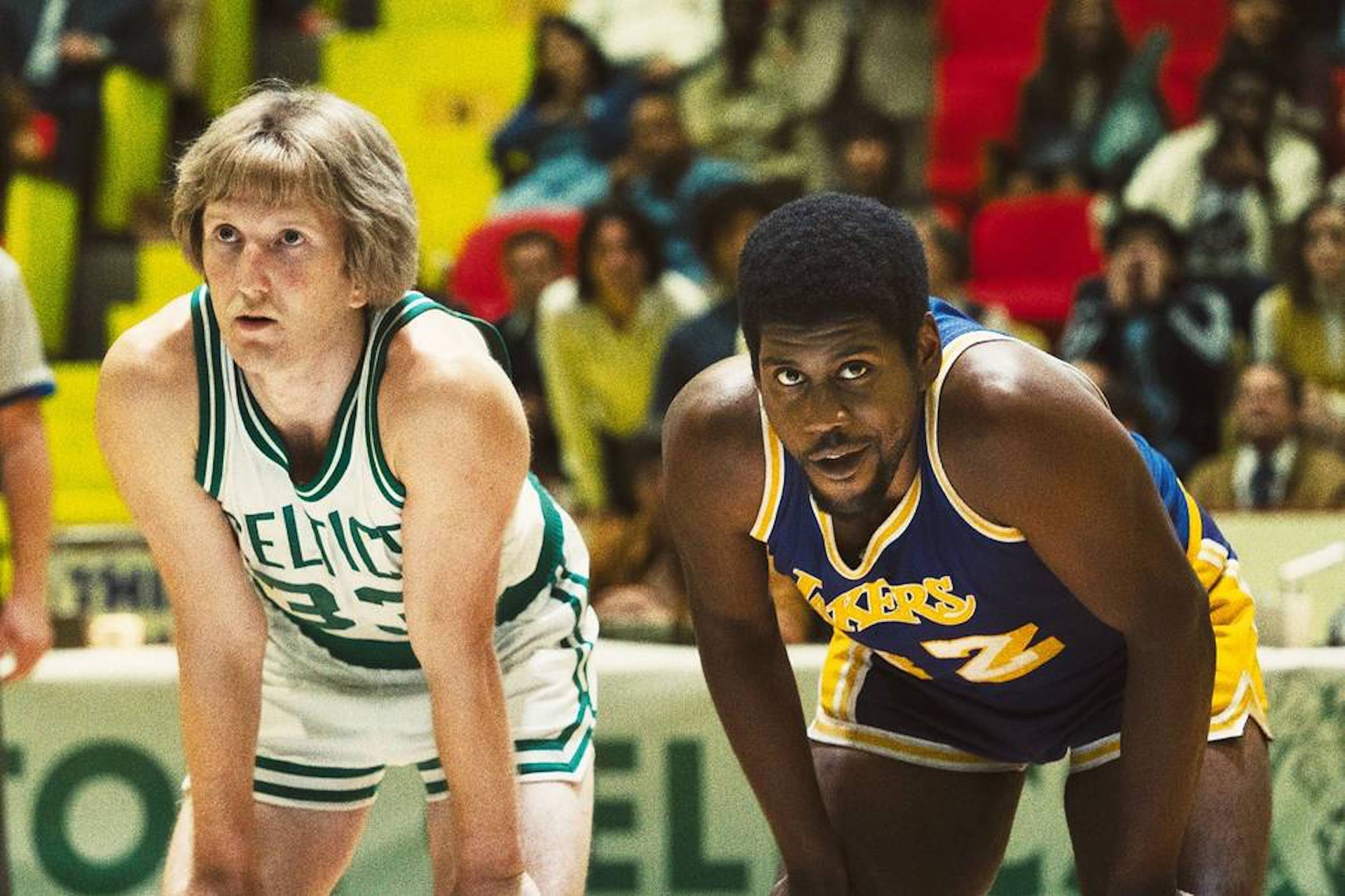
HULLFISH: Talk to me about the graphics that were used, especially in that first episode where we see the difference between Larry Bird and Magic Johnson is that one of them is white and one of them is black. You could have made that more subtle, but instead, it’s in your face graphically.
CORWIN: There was really nothing subtle about that episode and about the concept. It becomes a teeny bit satirical when it's done that way, but we didn't want to equivocate. I would say it's the same with Jess's, Max’s, and Felicia’s episodes as well. When we used graphics, they had to be purposeful.
LIVINGSTON: There are great graphics in episode seven, and in ten, but what Jessica did in episode seven by creating the graphics of a postcard to tell where the teams were playing. Wow, I’m just a huge fan of that, and just a little, geeking out. [Laughs]
HERNANDEZ: Thank you so much! I literally got a note from the producer that said we need more basketball that wasn't shot. They were going on away games, so they were supposed to go to Indiana, Detroit, and then end up in Boston, where the big game was, but we had no basketball for Detroit or Indiana. I don't know how we came to it, but I was thinking about old-school graphic elements where sometimes you would see the players inside of the word. I thought I could get away with more cheats of basketball and crowd and stuff within the lettering than I could try to fake it with what was available. I started to use footage from every single person's episode. Anything that hit the ground is in those two graphics. It fully came out of that desperation, and I think it turned out pretty cool.
HULLFISH: That's great. I love that! One of the things that I'm picking up from this group is something that I remember from being on Oprah with 30 editors, which was the great ability to go into other people's rooms and see how they were doing things and what their timelines looked like.
Were you all together in the same location or was this during the COVID era when you were all in your own homes?
HERNANDEZ: No, we were together. We were tested daily, and there was a competitive nature that was brought out with us being together in such a great way.
HULLFISH: There is a scene I loved where “Tark The Shark” is on a newspaper cover, and then the photo starts to talk to the people in the conversation. Was that scripted?
HERNANDEZ: Yes, that was in the script. That was my episode. That one was really simple, they just shot him, and then we dropped it right into the newspaper. So that was one of our easier pieces.
HULLFISH: I just wasn't sure whether it was scripted or not. You never know, like what's scripted and what's not. I love all that.
HERNANDEZ: On this show, you really don’t. We're allowed so much freedom in editorial that we go off the reservation sometimes.
CORWIN: You work like this until you're proven wrong or until a showrunner or a director tells you to get rid of something. It just seemed to be stylistically a way to make each one of these scenes a little more complete and richer.
HULLFISH: We've talked about the out-of-the-box thinking that you guys used, but I also wanted to talk about the real subtle editing. I loved a scene that you cut Hank where Magic and his dad meet with Jerry and the old owner. A lot of that scene is in the reactions, and I love the shots and moments that you chose because they showed what they were thinking, which was often different than what they were saying.
CORWIN: I find that eating scenes or scenes where people are sitting and talking are the hardest to cut. Magic’s dad is very dignified. He loves his son dearly and he wants him to succeed. He understands where Jack Kent Cooke has come from. Magic’s dad says something to the effect that he works on the Chrysler line, and Jack responds by saying, “Jerry Buss just tried to buy the Chrysler building.” So there's a complete disconnect. You can tell a lot about Magic in his upbringing by how his dad reflects what's going on. It's a way to make a scene bigger and that much more important.
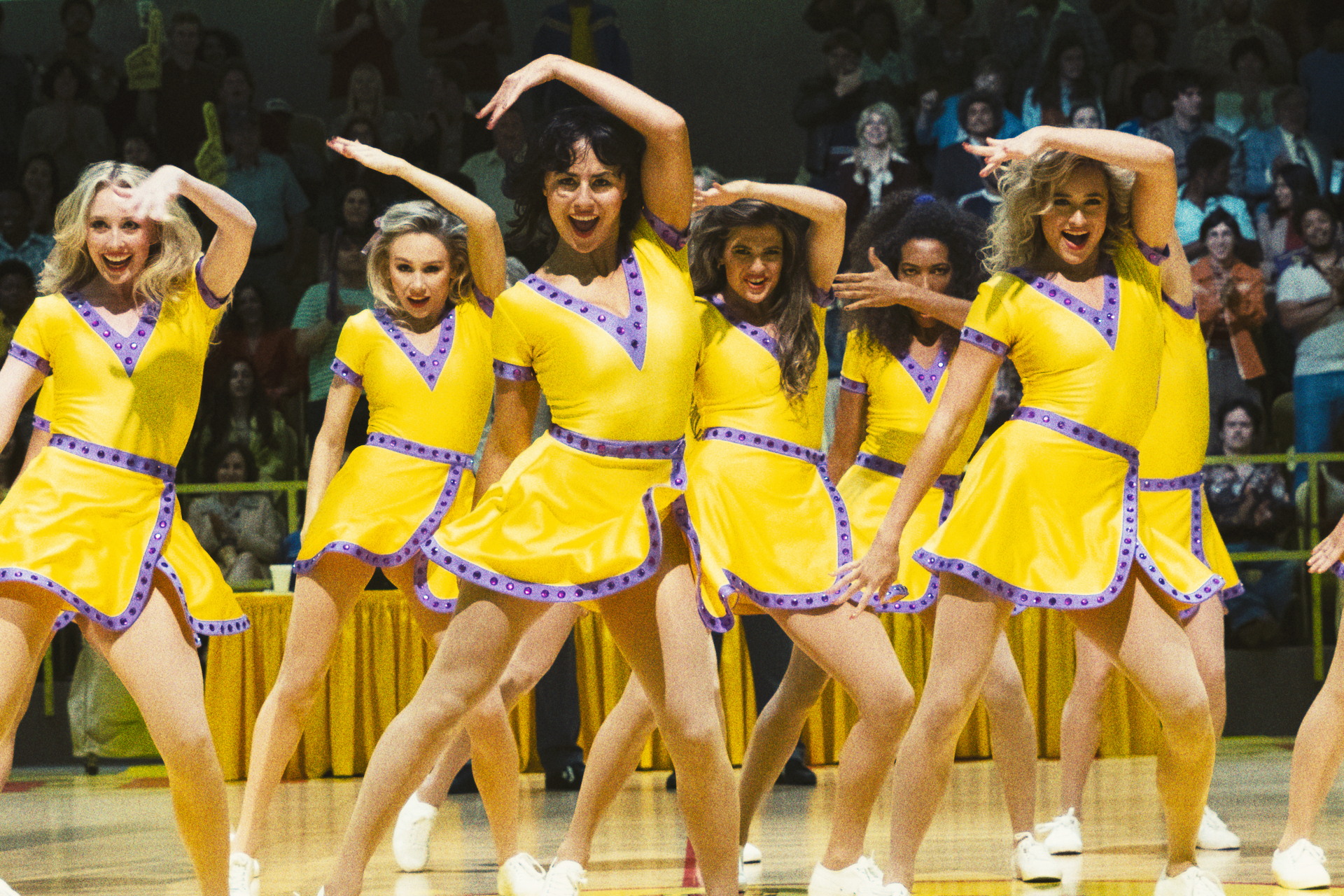
HULLFISH: Let's hear from Jeremy or Max about music. There is a ton of music in this show, and it's really eclectic. How much are you guys speaking into that? How much are you asking somebody for something?
KOEPKE: I love using music with editing, and even when there's no music on it, I try to make a scene musical. The rhythm of the movement, even in basketball scenes, is musical to me, even without music.
We tried to use music as a sound design element just as much as the score. Genres and tempos, they all tell different things. It doesn't always have to be a piece of music you slap on it and let it play. It can be embedded into the scene as we were discussing earlier; just the absence of sounds can go a long way. We all were experimenting with hard cuts in and out of music. A song can get you into a scene for 10 seconds if you can cut out of it, or it can come in halfway through. We were all thinking of less traditional ways of using music, and in the end, that's why there is so much music because it's being used in so many different ways.
WEINSTEIN: Continuing on the topic of music, one of the things about this show was I worked on the pilot with Hank, and we finished n December of 2019, but then COVID hit, and things changed. We were in this holding pattern during that time, and Max Borenstein, who was writing scripts, would send versions over, and since I wasn't doing much, I'd start reading, and every time he'd make a mention of a style or a spec







